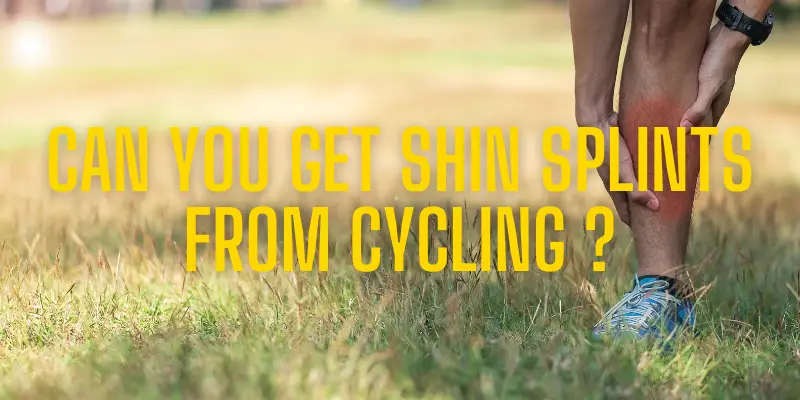Shin splints are a big problem for many people. The pain can range from bearable to completely unbearable and is likely to limit your performance. But shin splints hardly occur in cyclists.
At least 20% of people that engage in high-impact activities get shin splints. However, shin splints aren’t among the top cycling injuries. Can you get shin splints from cycling? And is cycling a high-impact activity?
What are Shin Splints?
Shin splints are a hard pain on your shin bone, the large bone on your lower leg, or the tibia. Shin Splints, medically known as medial tibial stress syndrome, occurs when too much pressure is placed on the tibial bone while exercising or engaging in high-impact activities/exercises.
These high-impact exercises put stress on weight-bearing joints and the bone in the leg area. Examples of high-impact activities include; running (especially on hills), dancing, basketball and football.
People often mistake shin splints as Tendonitis which is an inflammation/swelling of the tendon, that often gives a burning sensation around the ankle when you try to move, with skin appearing red from the pain, but shin splints give a feel of soreness or pain along the inner part of your shin bone.
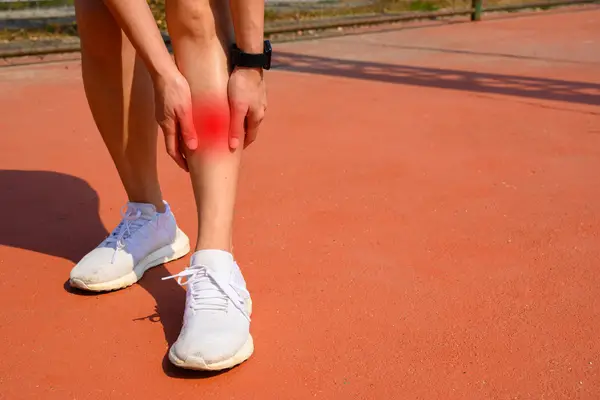
Other symptoms of shin splints include;
- An on and off discomfort while trying to move your leg,
- worsened pain during or after exercise and
- swelling of the inner lower part of the leg or the front of the shin bone.
Shin Splints can last for about 3 to 4 weeks with proper care, this depends on how long it takes your leg to heal. If it lasts for longer, it is advisable to contact your doctor.
Suggested: Is a Recumbent Bike good for Bad Knees?
How to Self-diagnose Shin Splints
It is advisable to go to the doctor as soon as you get a sprain or any injury to your leg, but if you are in a situation where you cannot get to a doctor these tips should help you know if you have shin splints or not.
- Examine how you walk by carefully looking at the lower leg, ankle and foot
- Move your ankle and foot around to feel for tenderness
- Stand or Hop on the affected leg to determine if it is a shin splint or a stress fracture.
How to Treat Shin Splints by yourself
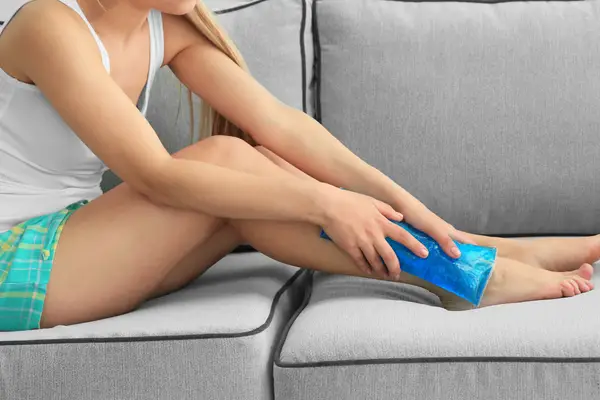
- Keep the affected leg elevated. That is, make sure you aren’t placing pressure on it.
- Put some ice on the affected area.
- Do some stretching exercises on the affected area and move your ankle in a circular motion.
- Take some painkillers to help with the pain and decrease swelling.
- Avoid pressing the swollen area.
You should call a doctor if;
- You are not sure your pain you are experiencing can be classified as shin splints.
- The swelling gets worse.
- If the pain is unbearable or still subsists after weeks of icing and pain killers.
Can Biking cause Shin Splints?
No, biking doesn’t cause shin splints because it is a low-impact activity that is less likely to put stress on your joints or leg bones.
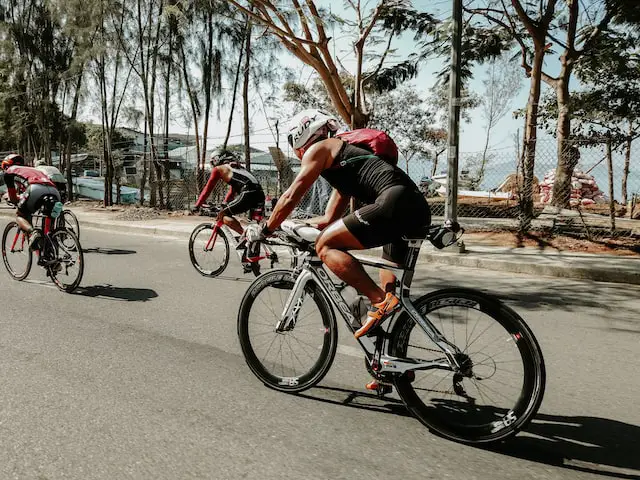
Non-impact exercises or low-impact sports are those activities you participate in that are gentler on the joints and leg area and they include exercises like; cycling, swimming, yoga, hiking, walking, pilates, and so on.
Feeling some pain around your shin bone does not imply that cycling is the cause of your pain, but it is likely that some other high-impact activities you have engaged in previously is the cause of the pain.
Are there Situations when Cycling can cause Shin pain?
Cycling makes use of the muscles along the leg area. If these muscles are overused, it can cause pains or shin splints. Thus, it’s possible that long distance, high intensity cycling could cause shin pain. However, the chance of this is low.
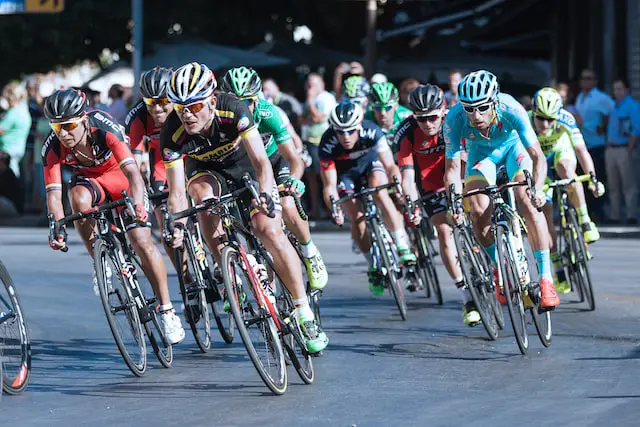
Why Do My Shins Hurt When Cycling?
Bikes need little force to move, but many cyclists still experience some shin discomfort. So, why do your shins hurt when cycling?
Here are 3 possible reasons why your shins hurt when cycling:
- You have a suboptimal pedal stroke. An effective peddle stroke goes in an oval circular motion, not pressing against the tibial bone. If you have a suboptimal pedal stroke you may be putting stress on the tibial bone, which might cause minor pain in the shin bone.
- You don’t have a good bike fit. No, not what you wear to cycle. Bike fit consists of seat height, pedalling motion, handlebar reach, and cockpit which is the seat and handlebar size.
The process of adjusting a bike for a rider in order to maximize their comfort, effectiveness, and efficiency is known as bike fitting.
When your bike is not properly adjusted to aid your comfort, your shins might hurt you when cycling.
- You overuse your muscles while riding. Though cycling is a low-impact activity, long distance high intensity riding can make your shins hurt. Cycling and ignoring necessary breaks can make your feet feel sore and even make your shin hurt because you are stressing or overusing your shin muscles.
Should I Bike with Shin Splints?
Biking with shin splints depends on you and the level of your shin splints, shin splints can range from moderate pain to unbearable pain.
Cycling with bearable shin splints is possible, as cycling doesn’t put much stress on the tibial muscle. But, cycling with high-level shin splints can injure the shin muscle and increase swelling.
Can you use a Stationary Bike with Shin Splints?
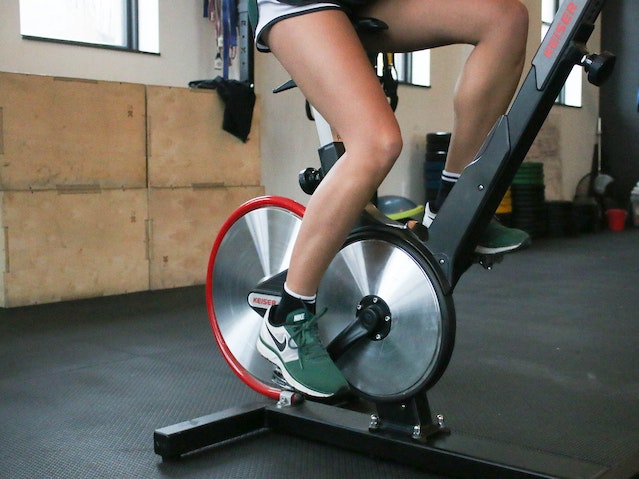
Yes, you can ride a stationary bike with shin splints. Peddling on a stationary bike has little impact on the shin muscles. It can strengthen your calves and work the muscles in the shin area which in turn stretches it out, but that does not mean it will reduce the pain.
Related: Spin bike vs stationary bike
How to Stop Shin Splints While Cycling?
Here’s how you can stop shin splints while cycling:
- Make minor adjustments to your cycling position. This has to do with adjusting the bike seats and your body to avoid putting too much pressure on the affected area while cycling. Adjusting your saddle lowers the possibility of sinking your heel during the pedal stroke’s downhill phase and raises your ankle’s movement during the pedal stroke’s upward phase.
Find your optimum saddle height here
- Try to keep your feet and ankle in the same position at all parts of the pedal strokes.
- Foot stretches to relieve the pain in your shin. You can pause your cycling to do this, putting your foot on a wall and stretching your calf would relax the muscle in your shin area. If the pain continues while cycling, stop cycling and go see a doctor to avoid causing further complications.
More: Wholesome Effect of Cycling on Body Shape
Cycling and Bike Fit
It is important to adjust your bike to aid comfort and efficiency before you ride to protect you from shin splints, just like you put on a helmet and elbow pads to protect yourself while biking.
Here are six factors to take into consideration when adjusting your bike or engaging in bike fitting;
- Make sure the ball of your foot is in front of the pedal spindle, the pedal spindle should support the back section of the meaty part of the ball of your foot. This would allow you to stay balanced when standing on the pedals.
- Check if your heels are on the pedal spindles to determine whether the seat height is comfortable. During a full backpedal stroke, your heels should be in contact with the pedals.
- Your saddle is too high if you have to move your hips to stay in contact with the pedals or if you lose contact with the pedals.
- Your knee should be slightly bent at the bottom of the pedal stroke while your foot is in a cycling position to protect your knee joint.
- Add bike headset spacers to the stem to bring the handlebars up higher. Spacers help you to adjust the height of your bicycle’s handlebars, to make riding more comfortable.
- Put your handlebars in a comfortable lean forward position to avoid hurting or straining your neck, shoulder, back, or wrists.
Tips to avoid Shin Splints in future
No one wants to experience the pain of shin splints. If you don’t want to experience that pain you need to know how to avoid shin splints in the future, whether you’re a runner or a cyclist.
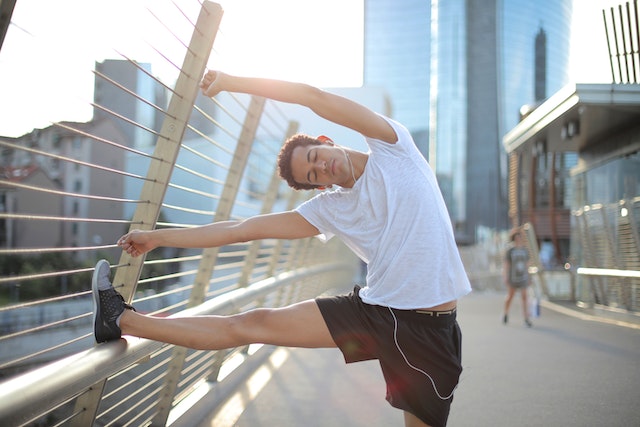
Here are some things you can do that might help avoid shin splints in the future.
- Avoid overdoing high-impact activities. Take it easy and avoid over-stressing your muscles when running or engaging in activities that can put stress on weight-bearing muscles.
- Invest in comfortable shoes. Wearing shoes that are comfortable and the right size helps to cushion your feet and absorb shock from your feet hitting the ground.
- Before and after biking or running, make sure to do stretches that target your calf muscles. Stretching out your muscles releases built-up tension which helps prevent shin pains and loosens tight muscles in the calf area.
- Try exercising on softer surfaces. Exercising on hard surfaces increases the amount of force that your bones and muscles absorb.
- Keep a healthy weight and improve your fitness. A sufficient amount of exercise can strengthen and relax your muscles.
- Make sure to visit your physical therapist. There are early signs of shin splints a physiotherapist would notice that you may not, just like going for dentist appointments and medical checkups, it is essential to visit your physiotherapist once in a while to ensure your muscles are strong and you are not prone to any injuries.
More: How long does it take to bike 10 miles?
Is Cycling or Walking better for Shin Splints?
Now that you know what shin splints are and how to take care of them, you probably would want to take it easy with your leg and be mindful of the activities you engage in.
One question ringing in your head might be, should I walk with shin splints or cycle with shin splints? Cycling is better for shin splints than walking.
Cycling with shin splints does not put much pressure on the shin muscles, but walking puts weight on your shin bone, the shock from your feet hitting the ground can worsen the injury in your shin area.
Final Word
To wrap things up, cyclists should be careful when exercising or engaging in sports that are likely to put pressure on any joint or muscle in the body. It is important to know which high-impact sports or low-impact activities might affect your shins, that way you won’t have to worry about treating shin splints, but only focus on preventing them.

